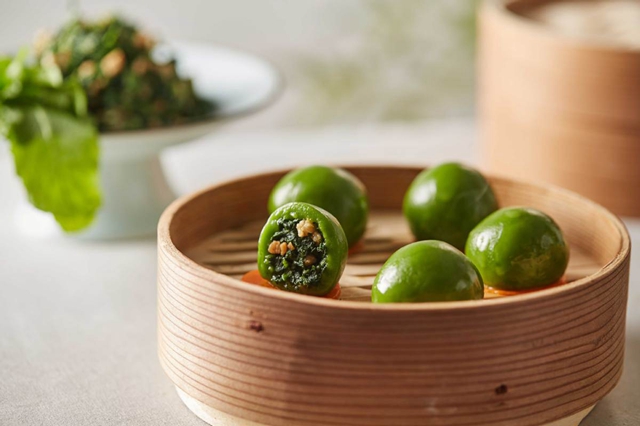Springtime flavors tempt taste buds
By LI YINGXUE| (China Daily)| Updated : 2021-03-25
Print Print
Qingtuan. [Photo provided to China Daily]
Zhang Guofei, executive chef at the Subangyuan restaurant chain in Beijing, which specializes in Jiangsu cuisine, said the bamboo shoots he uses are freshly cut in the province and quickly frozen before he takes delivery.
"When we cook the bamboo shoots, we first return them to room temperature before boiling them with sugar to get rid of the bitter taste," he said.
Zhang said that compared with winter bamboo shoots, the spring variety are crunchier and contain more water.
According to Zhu, many spring vegetables were originally edible wild herbs, but some are now planted by farmers for the market.
Over time, people have worked out the best way to cook wild herbs, he said, adding, "Toothed burclover is best matched with alcohol when fried, and the ideal accompaniment for malantou is dried tofu."
He said that in Shanghai toothed burclover is usually served in small local restaurants and is suitable as fillings for cakes or steamed stuffed buns with bamboo shoots.
"In spring, toothed burclover leaves are larger, thicker and tender. Unlike other green vegetables that tend to become rather messy when fried, the toothed burcl over leaves remain clear," he said.
Zhu said tender shepherd's purse makes it suitable for fillings. Its fragrance is brought best out by wontons, and it is also good in spring rolls and qingtuan-sweet green glutinous rice balls.
Qingtuan, a popular spring snack in the Yangtze River Delta, is traditionally stuffed with a red bean filling or dried meat floss. The green glutinous skin is dyed with wormwood juice.
"The best time to eat qingtuan is when it's cooled to room temperature after being steamed, which brings out the flavor of the rice balls," Zhu said.
"If it's too hot, then the fragrance of the wormwood will disappear, and if it's too cold, the glutinous rice will be dry," he added.

 Cultural hub of Jining revitalizes traditional culture
Cultural hub of Jining revitalizes traditional culture  Statistics: Fun facts about Heze's peonies
Statistics: Fun facts about Heze's peonies  Shandong province pioneers new quality productive forces
Shandong province pioneers new quality productive forces